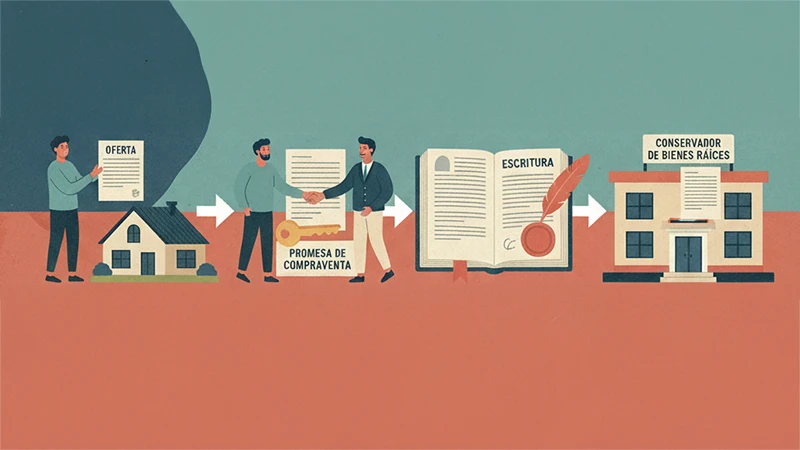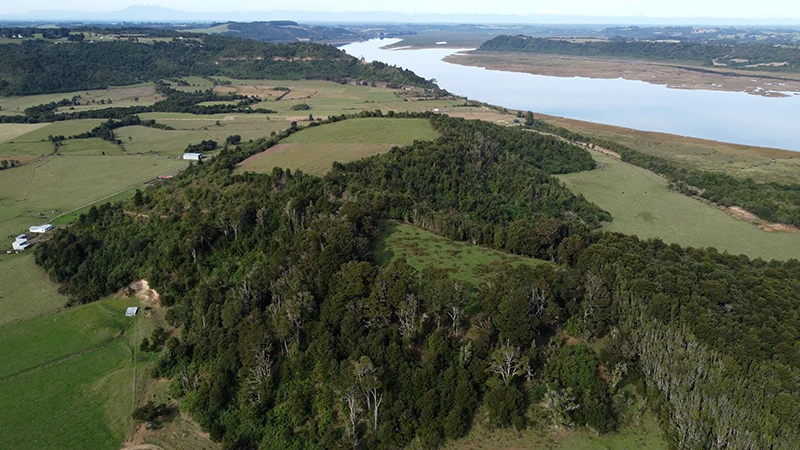Forest fires in Chile are a constant concern, especially during the summer months when temperatures rise and vegetation becomes drier and more susceptible to fire. In this article, we will explore how forest fires are formed in Chile, the implements needed to fight them, the risks they pose to ecosystems and humans, and the precautions we should take to avoid these disasters, especially in southern Chile.
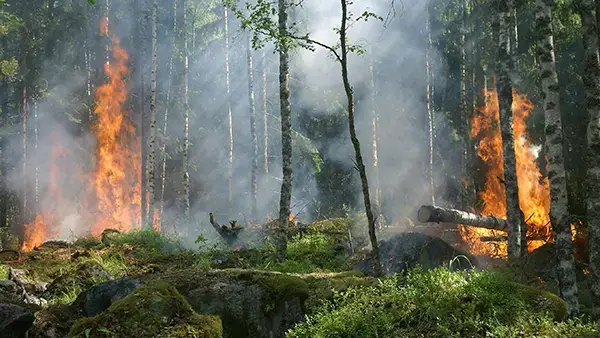
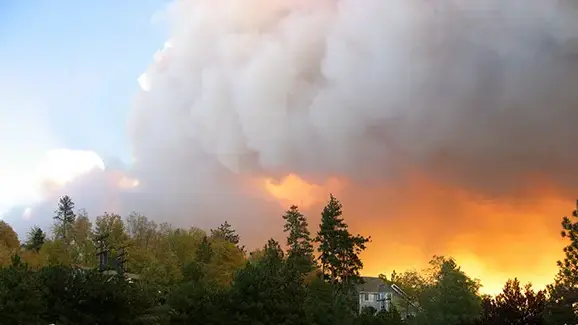


How are forest fires formed in Chile?
Forest fires in Chile can be caused naturally or by human activity. Natural factors include lightning strikes during dry thunderstorms, volcanic eruptions or the spontaneous combustion of dry plant material. However, in Chile, most forest fires are caused by human activities, such as uncontrolled agricultural burning, badly extinguished campfires, cigarette butts, or even arson, cigarettebutts, or even arson.
Climate change has exacerbated the frequency and intensity of forest fires in Chile, increasing temperatures and prolonging droughts. This has turned forests and scrublands into veritable fuels, ready to burn at the slightest spark.
Fire Risks to Ecosystems and Humans
Wildfires cause devastating damage to both ecosystems and human communities. In ecological terms, fire can wipe out essential habitats, threatening the survival of local species and disrupting critical natural cycles, such as forest regeneration. The loss of vegetation also increases soil erosion and degrades water quality in rivers and lakes. and degrades water quality in rivers and lakes.
For human communities, fires represent an imminent danger, threatening lives and property, especially in rural and forested areas. In addition to the physical risk, smoke from fires causes respiratory problems and exacerbates pre-existing diseases such as asthma. From an economic perspective, fires can devastate agricultural land, damage infrastructure and harm key industries such as tourism, severely affecting the value of the affected area.
The temperate and Andean forests of the Los Lagos, Los Ríos and Aysén regions, which are vital for biodiversity and water regulation, face a growing risk of irreparable damage from increasingly frequent and intense fires. These fires not only destroy critical habitats and deteriorate water quality, but also intensify soil erosion, causing long-term consequences for the environment and local communities.
The increased risk of wildfires also directly impacts rural and agricultural areas, where flames can destroy crops, infrastructure infrastructure and housing, resulting in significant economic losses and forced displacement of the population.
Causes that are increasing the number of wildfires in southern Chile
Although historically the south has been less prone to wildfires, especially in regions with wetter climates. especially in regions with wetter climates, risk is increasing as a result of climate change.
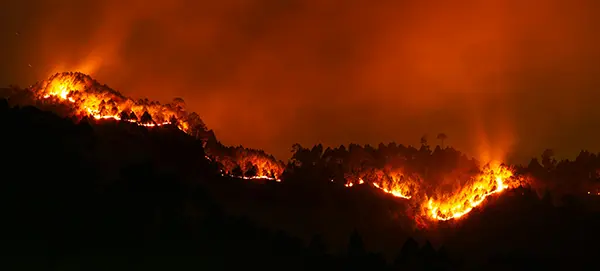
Rising temperatures:
Climate change is causing a gradual increase in temperatures in southern Chile. Warmer summers may lead to increased evaporation of water from the soil and vegetation, reducing humidity and making forests and rural areas more susceptible to fires.
Changes in the Precipitation Pattern:
Although the regions of Los Lagos, Los Ríos and Aysén are known for their abundance of rainfall, climate change is altering precipitation patterns. More frequent and longer periods of drought have been observed, particularly in summer, reducing moisture in vegetation. These drought conditions increase the risk of forest fires, as dry plant material is more flammable.
Extreme Weather Events:
Climate change is also associated with an increase in the frequency and intensity of extreme weather events, such as heat waves and thunderstorms without significant precipitation. These conditions can trigger fires, either through natural ignition by lightning or by human activities during periods of extreme heat.
Extension of the Fire Season:
With higher temperatures, greater variability in rainfall and higher wind speeds, the fire season in the south is likely to lengthen. Wildfires, which used to be more sporadic and limited to certain periods of the year, could become more common throughout the spring, summer and even fall.
Fires in humid regions compared to drier , windier climates
The Los Lagos and Los Rios regions generally experience fewer forest fires compared to the Magallanes region . forest fires compared to the Magallanes region. This is due to several climatic and geographic differences geographic differences between these regions of southern Chile.
Chilean Patagonia, known for its vast natural landscapes and biodiversity, is particularly vulnerable to forest fires, is a region that is particularly vulnerable to forest fires due to its dry and windy due to its dry and windy climate during the summer.
Climate and Precipitation:
Los Lagos and Los Ríos: These regions are known for their temperate and humid climate, with abundant rainfall throughout the year. The high humidity and the constant presence of rainfall significantly reduce the probability of forest fires, as the soil and vegetation are usually quite moist. Although there are drier periods, especially in summer, the residual humidity and frequency of rainfall help keep fire risk relatively low.
Magallanes: The Magallanes region, in Patagonia, has a cold climate, but summers can be dry and windy, which increases the risk of fires. In addition, the vegetation of Magallanes is less dense compared to the regions of Los Lagos and Los Ríos, but is more susceptible to fires when it dries out. Strong Patagonian winds can spread fires quickly, making the region more vulnerable during dry periods.
Winds:
Magallanes: Winds in Magallanes are known for their intensity, which not only facilitates the rapid spread of fires, but also makes it difficult to control them. This is a key factor contributing to the higher incidence and severity of fires in this region compared to Los Lagos and Los Ríos. and severity of fires in this region compared to Los Lagos and Los Ríos.
VegetationDensity
Los Lagos and Los Ríos: These regions have denser and more exuberant vegetation, which, under normal conditions, due to the humidity, is not prone to fires. However, in exceptional conditions of drought or high temperatures, fires may occur, but they tend to be less frequent and less devastating than in Magallanes or further north, from the Araucanía Region to the north.
Magellan: Although the vegetation is less dense, the grasslands and shrublands present in the region are highly flammable when dry, contributing to the increased risk of fires.
Precautions to Avoid Forest Fires
- Prohibition of Bonfires and Burning: Avoid lighting campfires in non-designated areas and do not conduct agricultural burning without proper supervision.
- Education and Awareness: Promote environmental education in the local communities and among tourists so that they will the importance of avoiding behaviors that can cause fires.
- Surveillance and Monitoring: Implement surveillance and monitoring systems in high risk areas, using both technology and ground patrols.
- VegetationManagement: Conduct controlled pruning and remove dry vegetation near inhabited areas to reduce fuel availability. to inhabited areas to reduce the availability of fuel.
- SafeConstruction: Buildings in rural areas or near forests should be constructed with fire resistant materials and designs that minimize the risk of fire spread. materials and with designs that minimize the risk of fire spread.
- Evacuation Plans: Develop and practice fire evacuation plans, ensuring that everyone knows how to act and where to go in an emergency.

What implements to have to fight a forest fire?
Tackling a wildfire requires a combination of hand tools, personal protective equipment, and advanced technology. Among the most common implements are:
1. Hand Tools:
– Pulaski: Combined axe and hoe tool, ideal for creating control lines.
– McLeod Rake: Used to clear vegetation and create firebreak lines.
– Axes and Machetes: To cut branches and create paths.
– Shovel: To remove soil and extinguish embers.
– Fire extinguisher: A tool for smothering small flames .
– Water Backpack (Back Pump ): A backpack with water tank and hand pump for extinguishing small light bulbs.
– Water or Foam Extinguishers: For small outbreaks.
– High pressure hoses: Connected to a water source such as a pond or tanker truck.
– Portable pumps: To extract water from natural sources.
– Mobile water tanks: For water supply in areas without direct access to water.
– Axes, shovels and hoes are essential to create control lines, i .e. , areas cleared of vegetation that act as barriers to stop the advance of the fire.
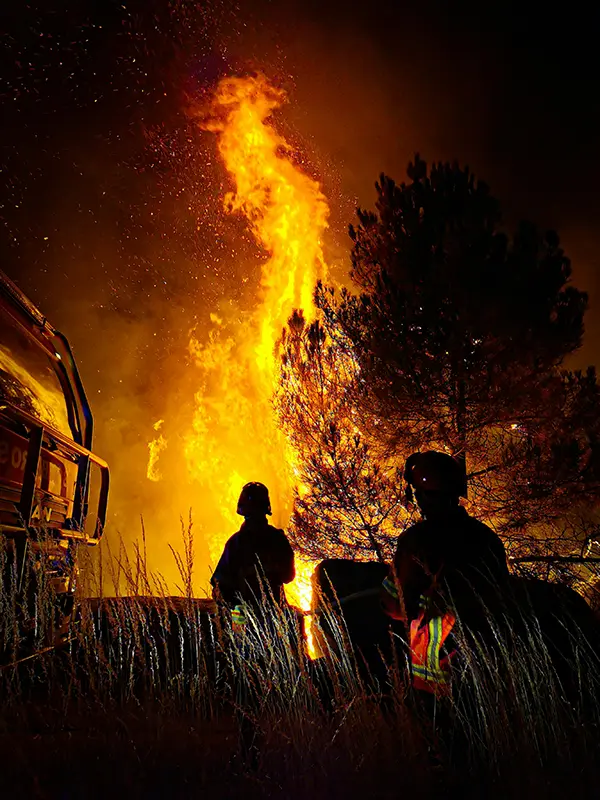
Communication and Coordination: Portable radio: To maintain communication with the team and command centers. GPS: For orientation in difficult terrain. Maps and compass: For planning routes and firebreak lines. Radios and GPS devices allow coordination of operations in wide and difficult to access terrain.
Personal Protective Equipment ( PPE): Helmet with visor or goggles. Fire resistant gloves. Mask or respirator to protect against smoke. Fireproofclothing, including jacket and pants. Safety boots with non-slip soles and steel toe cap. Hearing protection if noisy tools are used. It is essential to protect fighters from flames and extreme heat.
Specialized Vehicles: Tanker trucks: Equipped with water tanks and pumps. Bulldozers: To create firebreak lines and clear vegetation quickly. Drones: For aerial fire monitoring. Helicopters and aircraft capable of dropping water or retardant are vital to attack fires from the air and from the ground. are vital for attacking fires from the air and from the ground.
5. Fire Retardants: Chemical substances that are spread on vegetation to slow the advance of flames. Fire fighting foam or gel: To protect structures and vegetation.
Emergency Supplies: First aid kit: To treat minor injuries on site. Water and non-perishable food: To keep the team hydrated and nourished. Flashlights and batteries: For visibility in night operations. Emergency fire shelters: For extreme cases where evacuation is not possible.
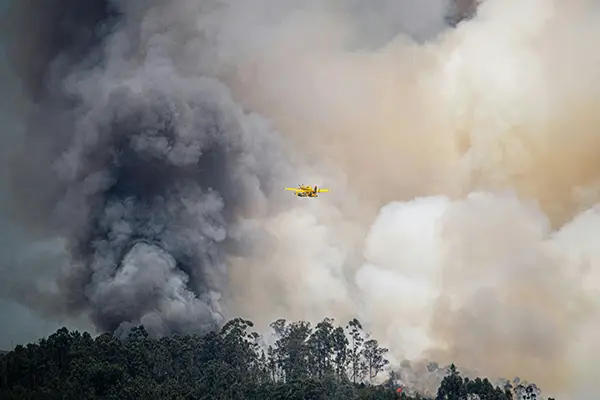
Forest fires in Chile are a real danger that requires prevention, preparedness and coordinated response. With the right combination of public awareness, specialized equipment, and preventive measures, it is possible to significantly reduce risk and protect both ecosystems and human communities.
As wildfires become more frequent and intense, it is essential that local authorities and communities develop robust strategies for fire prevention and management. This includes implementing education and awareness programs, developing rapid response infrastructures, and promoting sustainable land management practices. Coordination between government agencies, non-governmental organizations and the local population is crucial to mitigate risks and protect one of the world’s last great wilderness areas.
At Produncan Lands, our commitment to environmental stewardship and the preservation of nature is a top priority. We recognize the devastating threat that wildfires pose, not only to the land and ecosystems, but also to the communities that depend on them. We believe that, through prevention, education and joint action, we can make a significant difference in the preservation of the valuable natural resources of Chilean Patagonia.
We call for us to ensure that future properties are designed and managed with fire prevention best practices. This includes the implementation of strategic fire breaks, the removal of flammable vegetation near structures, and the use of fire-resistant building materials in our developments.
In addition, we also call for active support for the training of communities and landowners in wildfire and landowners in wildfire preparedness and response. Encourage collaboration with local forest management experts and firefighters to offer workshops and educational and local firefighters to offer workshops and educational resources that teach how to reduce the risk of fire and how to act effectively and how to act effectively in case of an emergency.
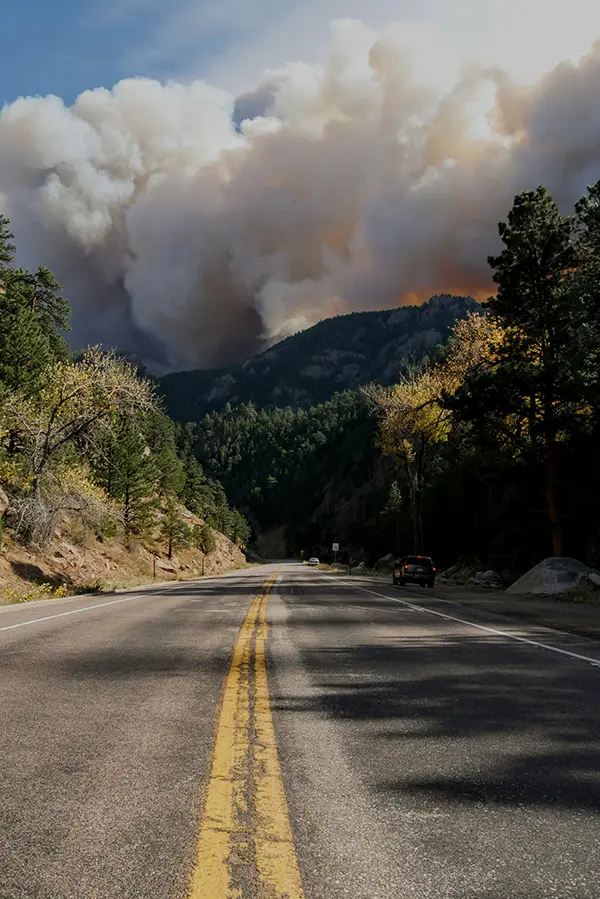
We also support those investing in advanced technologies for early fire detection, using drones and sensors to monitor large areas of land in real time. These tools allow us to identify potential threats immediately , facilitating a rapid and coordinated response to mitigate the impact of a fire, facilitating a rapid and coordinated response to mitigate the impact of a fire.
Finally, support being part of community and regional initiatives that seek to strengthen initiatives that seek to strengthen resilience to wildfires. This includes supporting post-fire reforestation campaigns and collaborating with local organizations working to restore affected areas. collaborating with local organizations working to restore affected areas.
Southern Chile, with its unparalleled natural beauty, is a region that faces significant challenges due to its vulnerability to forest fires. Protecting this natural treasure is not only vital for local biodiversity, but also for future generations who deserve to experience the majesty of this unique place.
